10 Differences: Transparent vs Non Transparent Proxy Server
News2025/09/16, 22:077 min read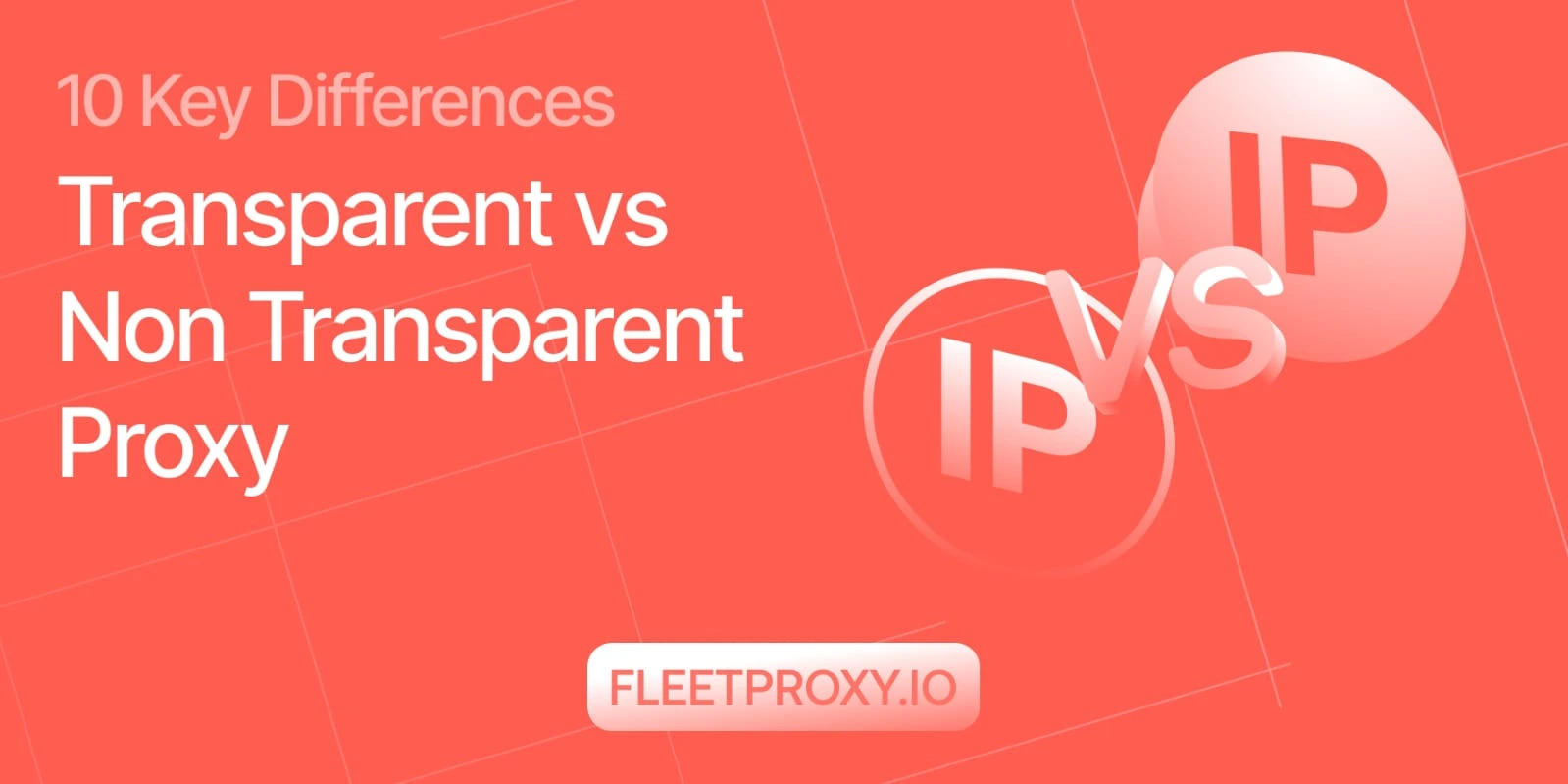
10 Key Differences: Transparent vs Non Transparent Proxy Server
As we already know, a proxy server acts as a bridge between your device and the internet. Its primary role is to enhance privacy by replacing your real IP address with a new one.
Not everything is as clear as glass. On the internet things may look simple but the way proxies work is often more complex. Among the different types many people prefer using a non transparent proxy because it hides their real IP address. In this case, the website cannot connect with you directly it only sees the proxy server.
Let’s explore in detail how transparent and non transparent proxy servers work and why this difference matters for online privacy, security and control.
What is a Transparent Proxy?
A transparent proxy server sits between your device and the internet. The purpose is simple it forwards your request without hiding your real IP address. The reason it’s called transparent is that the website can still see your original IP and the proxy openly announces itself to the destination server.
Transparent proxies are commonly used in schools, colleges, hotels, public Wi-Fi networks and are often activated by Internet Service Providers (ISPs). Their main functions include filtering traffic, improving browsing speed through caching and monitoring online activity.
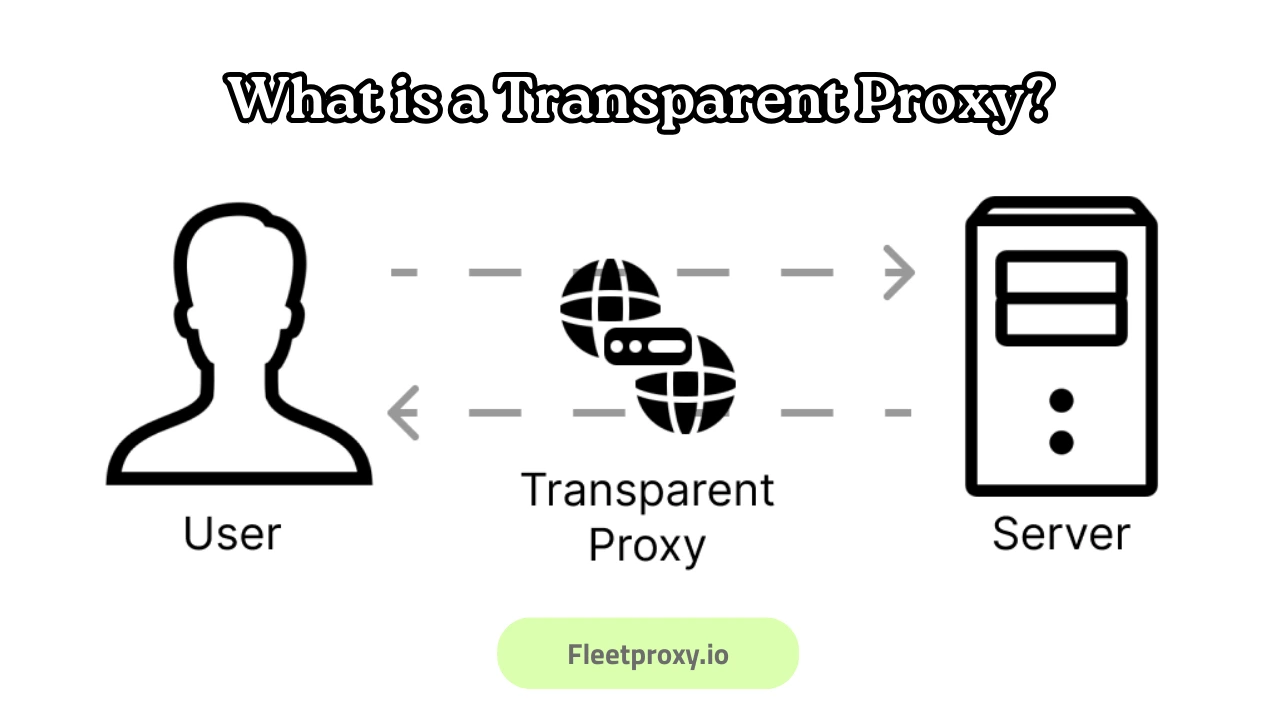
What is a Non Transparent Proxy?
A non transparent proxy is basically the opposite of a transparent proxy. As the name suggests it hides your real IP address while forwarding your request to the internet.
There are two main types:
• Anonymous proxy: This type hides your IP however it sometimes reveals that you’re using a proxy.
• Elite proxy (high anonymity): This offers complete privacy and does not disclose that a proxy is being used at all.
Non transparent proxies are most useful when you want to:
• Stay completely anonymous online.
• Access content from another country by bypassing geo restrictions.
• Change your IP frequently for automated tasks such as managing multiple accounts or collecting data from websites.
Squid Transparent Proxy Server
Squid is a widely used open source caching proxy often used in transparent mode. Its main purposes are to increase the speed of frequently visited websites through caching. Control access by deciding which websites can or cannot be opened and reduce overall data usage.
When Squid runs as a transparent proxy server it helps accelerate web access. Squid allows companies to easily enforce policies such as content filtering and traffic monitoring all without requiring users to change their device settings.
Configure Transparent Squid Proxy Server
Configure Squid as a transparent proxy server to help companies filter content and improve web access.
Here’s how it works:
• Redirect port 80/443 on the firewall (used for normal web traffic).
• Forward this traffic to the Squid proxy server.
• Set Access Control Lists (ACLs) to apply caching and filtering rules.
The main drawback is that Squid transparent proxy server does not hide the client’s real IP address websites can still see it.
Read More: Are Proxy Servers Illegal?
Key Differences: Transparent vs Non Transparent Proxy
1. IP Masking
• A non transparent proxy hides your real IP address.
• A transparent proxy doesn't hide the IP it shows it to the website.
2. Visibility to Server
A non transparent proxy doesn't show that you are using a proxy, while a transparent proxy reveals that the proxy is in use.
3. User Configuration
In a non transparent proxy, users require manual configuration on each device. In a transparent system there is an automatic setup of the network.
4. Primary Use
Transparent proxy is commonly used for caching, filtering and monitoring. A non transparent proxy is preferred for privacy and bypassing geoblocks.
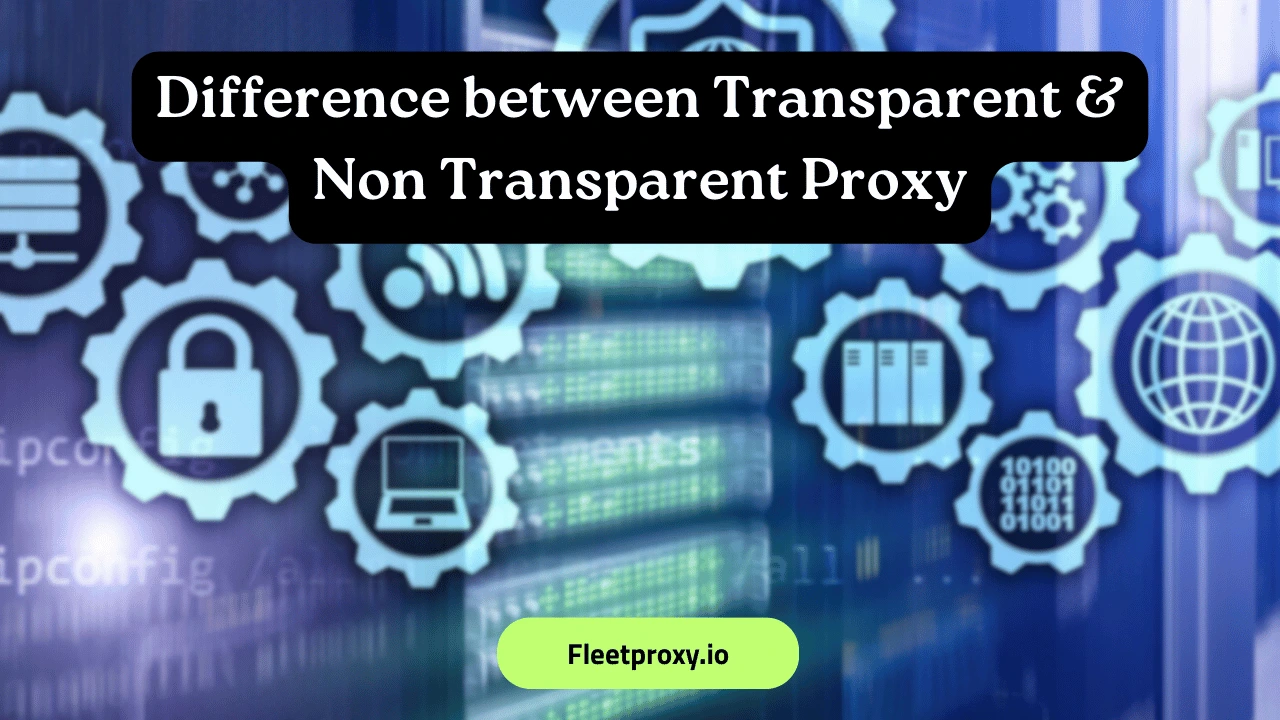
5. Logging & Accountability
Transparent is best for logging and monitoring. A non transparent prioritizes users anonymity and privacy.
6. Detection Risk
A transparent proxy is easily identifiable by websites while a non transparent proxy is harder to detect.
7. Setup Complexity
Transparent is easy to set up a wide network. A non transparent setup is quite difficult as it is configured manually on every device.
8. Web Scraping
Transparent is not too secure for web scraping. For scraping, a non transparent proxy is well suited with a rotating IP residential.
9. Social Media Management
A non transparent proxy is great to manage multiple accounts although a transparent proxy is of higher risk as it results in account ban.
10. Performance
Improves speed through caching in a transparent proxy. There may be a delay in performance due to high privacy in a non transparent proxy.
Residential Proxy
This proxy uses IP addresses assigned by real Internet Service Providers (ISPs) so websites recognize requests as coming from ordinary home users. Because the traffic appears authentic residential proxies are highly effective at avoiding blocks and mimicking real user behavior.
Proxy for Social Media Management and Web Scraping
If you manage multiple social media accounts for clients or a brand platforms may flag or block logins that all originate from the same IP. Elite and residential non-transparent proxies help because they make each account appear to come from a different device and location reducing the risk of bans.
In web scraping, when you collect a large amount of data from a single website the server may block your IP. That’s why rotating non transparent residential proxies are used. They assign a new IP for each request which helps you avoid getting blocked. Transparent proxies are not useful here because they don’t provide fresh IPs.
Proxy for Geo Restrictions and Proxy Servers' Privacy
If content is restricted in your country using non transparent residential or ISP proxies can make it appear as if you are accessing the site from an allowed location. This lets you view region locked content but you should always check whether doing so is legal and ethical.
When it comes to privacy a transparent proxy is mainly used for network control and monitoring. A non transparent proxy focuses on securing your anonymity and personal data. If privacy is your priority choose elite or residential non transparent proxies and always review the provider’s data and logging policies.
Final Look
The differences between a transparent proxy and a non transparent proxy guide you in choosing the right option. Always select the one that matches your specific work requirements.
While a transparent proxy offers efficient monitoring and faster performance, a non transparent proxy provides stronger security and lowers the risk of bans. Choose wisely and keep these points in mind when deciding.
People Also Ask:
Q1) Are non transparent proxies more secure than transparent proxies?
Ans: Yes, non transparent proxies prioritize privacy and security and transparent proxies provide you with a quick performance.
Q2) Which one is better a transparent or a non transparent proxy?
Ans: A non transparent proxy hides your real IP address, while a transparent proxy shows that the proxy is in use.
More popular posts
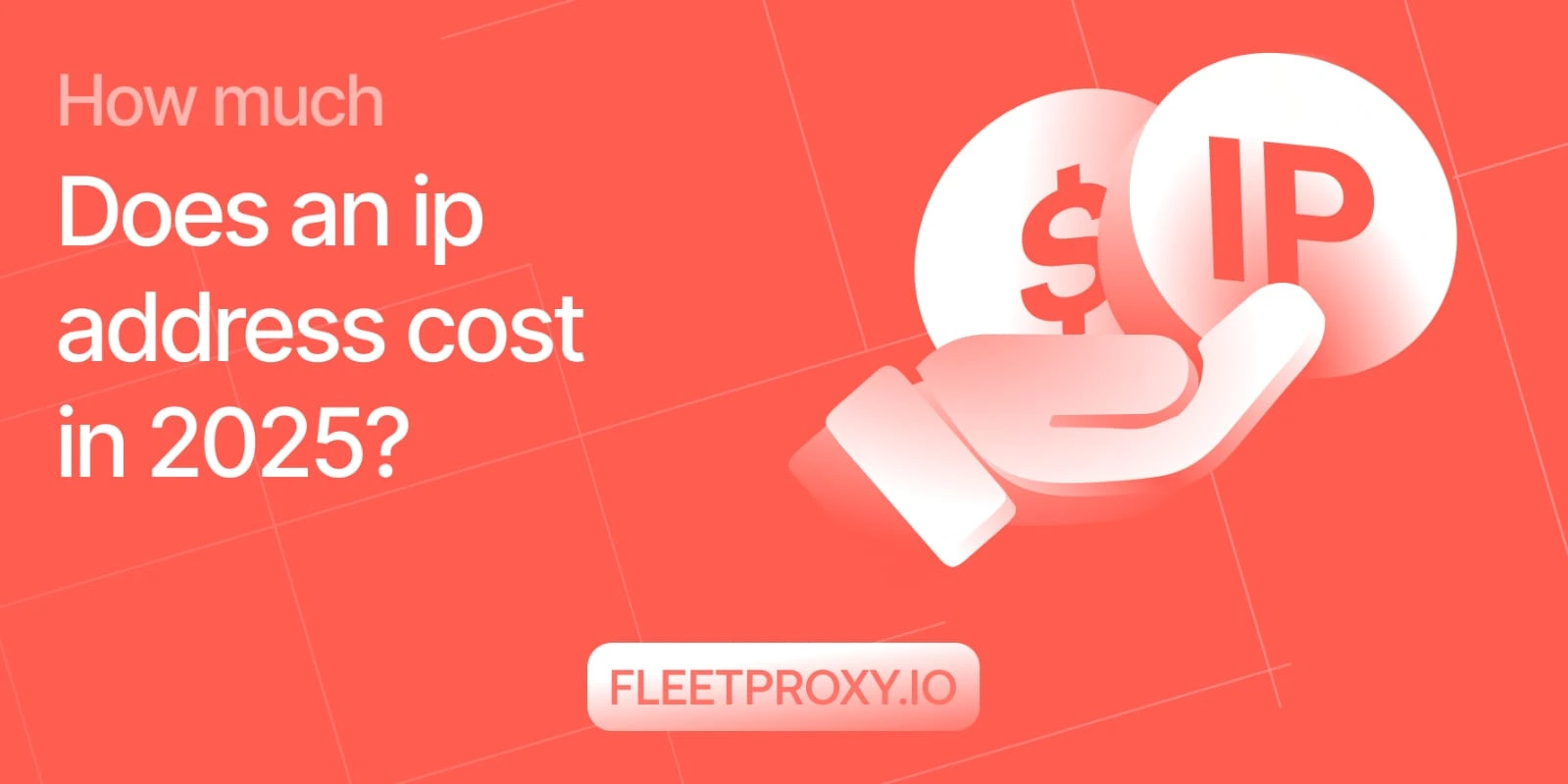
How much does an IP address cost in 2025?
The IP address cost in 2025 varies across regions. Larger blocks are cheaper per IP but costly overall, while smaller blocks offer more stability, clarity and security. No matter the option, understanding these trends helps businesses make smarter and more cost-effective decisions
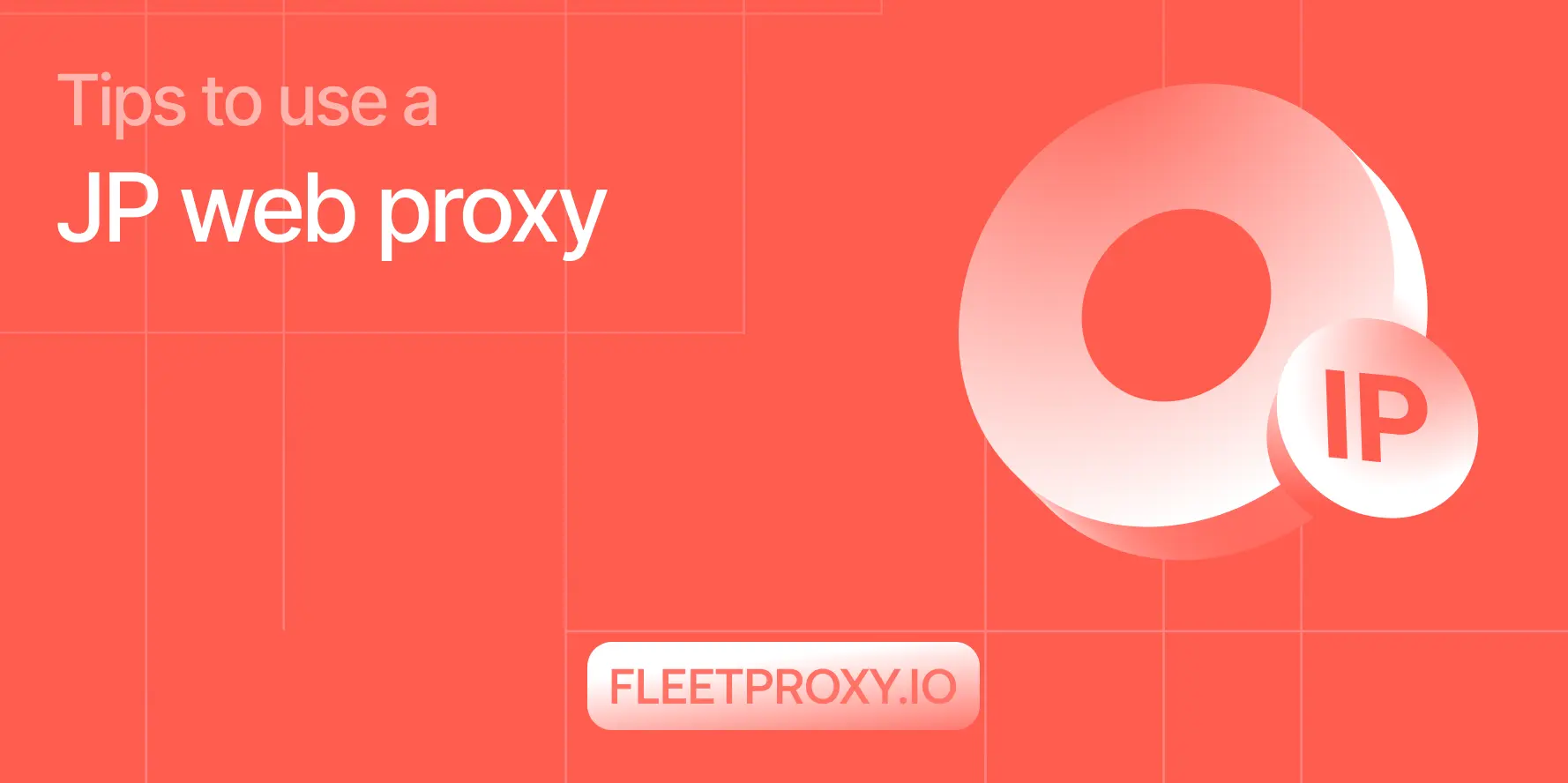
Tips to Use a JP Web Proxy to Browse Japanese Websites Safely.
Have you ever clicked on a link to an exciting Japanese video, a regional news article, or a unique e-commerce site, only to be met with a frustrating error message? "This content is not available in your region." This digital barrier, known as geo-blocking, is a common hurdle for international fans of Japanese culture, researchers, and expats alike.
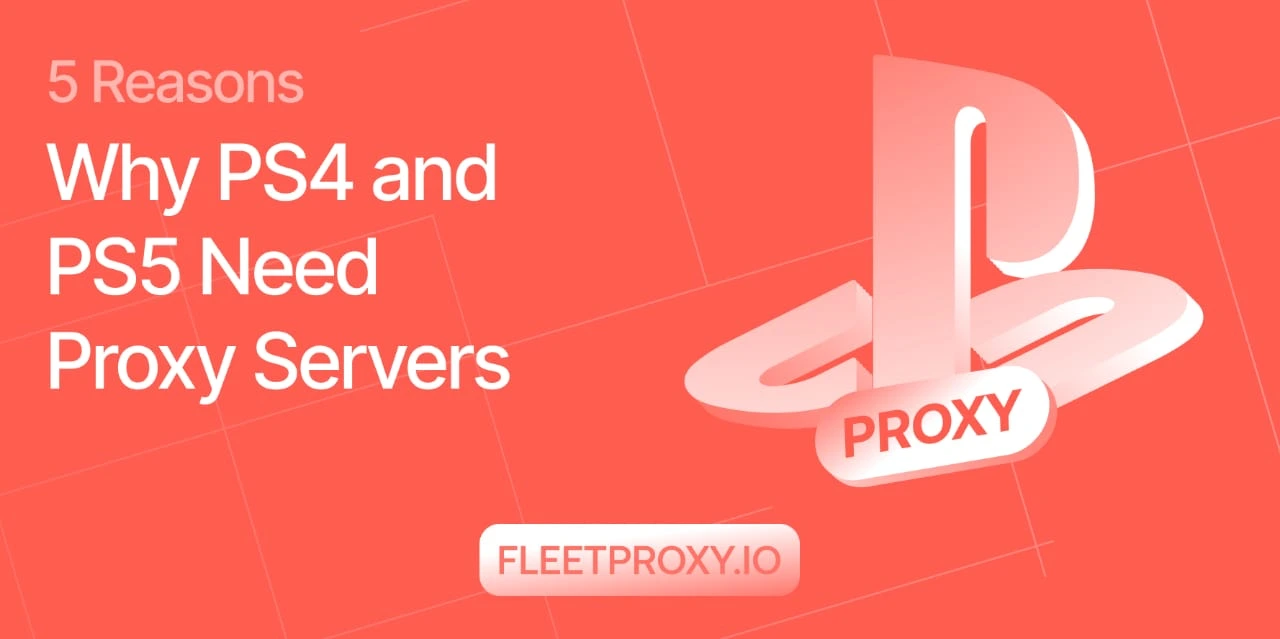
5 Reasons Why PS4 and PS5 Need Proxy Servers
Ever wondered how a simple proxy server can take your PlayStation gaming to the next level? If yes, you’re at the right place. In today’s digital world, gaming is not limited to a pastime activity anymore, it has transformed into a serious passion and even a career option for many.





